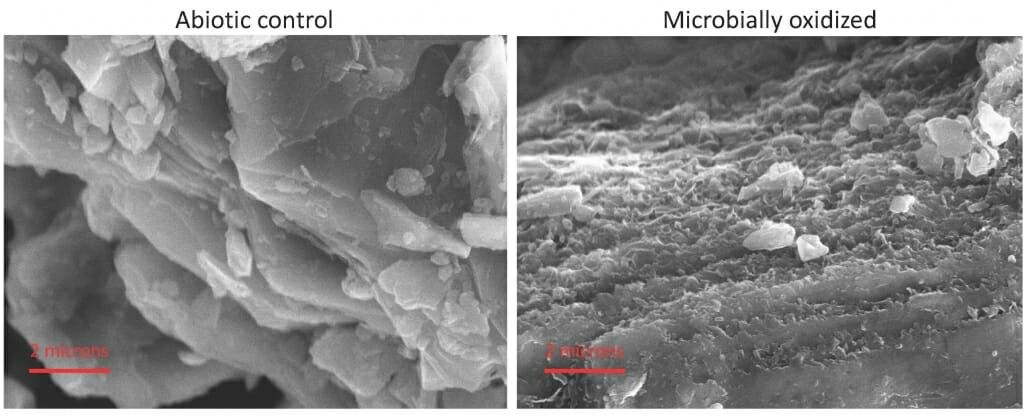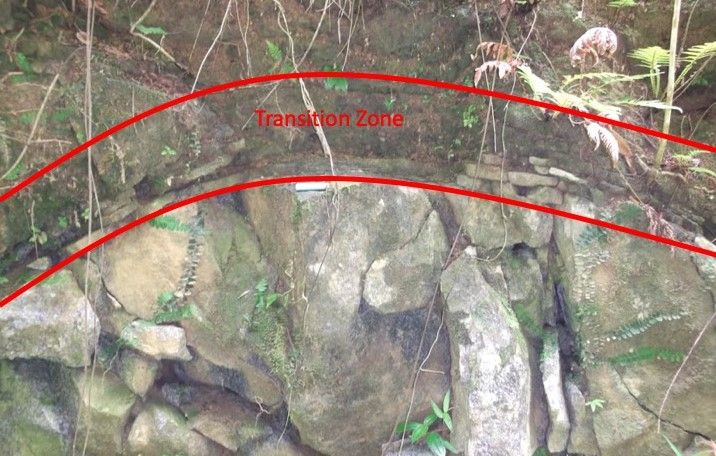The biofertilizer industry has long known about the power of microorganisms to improve the availability of nutrients in the soil for plants. But recently, researchers also discovered that the role of microbes in the soil goes much deeper. In fact, bacteria are at work all the way down to the bedrock where they speed up the process of making soil.
Soil was once described as, “that thin layer on the planet that stands between us and starvation”, yet studies have calculated that, “Each year, an estimated 24 billion tonnes of fertile soil are lost due to erosion. That’s 3.4 tonnes lost every year for every person on the planet.”
This may pose a major challenge for the future of agriculture as making soil takes time. The US Department of Agriculture stating that, “… most soil scientists agree that it takes at least 100 years and it varies depending on climate, vegetation, and other factors.”
Science has now shown the key role that organisms play in breaking down bedrock to form soil.
The research was conducted at the University of Wisconsin-Madison, where a team led by senior author Eric Roden, a professor of geoscience, questioned our current understanding of soil.
“The general picture of soil shows solid bedrock a few meters below the surface, then a fractured, crumbly layer popularly called ‘subsoil’,” explained Roden. “At the top is the rich, biologically active layer called soil. Chemical analysis links the minerals in soil to bedrock, but how does this extreme transformation take place?”
The role of plant roots, natural compounds, and oxygen in degrading surface rocks is known, but the bedrock that lies under the soil is beyond the reach of roots, so our understanding of how it is broken down is minimal. This study has shown that microorganisms play a role in fracturing the bedrock and decomposing solid rock into the smaller mineral components, such as potassium and phosphorus, that make soil an inhabitable place for plants.
It is knowledge that could lead to a better understanding of soil microorganisms and their role in soil and crop cultivation.
The work has now been published in the Proceedings of the National Academy of Sciences.
“We know that chemical and physical processes start to crack bedrock,” says Roden, “but those processes are not enough to make the minerals that become soil. Once the bedrock cracks sufficiently, microbes enter the cracks and take over. The result, according to our work, is a rapid biological acceleration of weathering.”

Key to the relationship between microbes and rock is oxidation, the process that causes iron to rust.
In essence, oxidation moves electrons and in doing so supplies energy to the bacteria.
As the university press release notes, “In general, microbes ingest their ‘food’ into their cells before they ‘eat’ it, but they cannot ingest intact rock. So, the diverse group of bacteria that Roden's group identified in the lab use proteins on their outer surface to move the electrons.”
To test this theory, the study’s first author, Stephanie Napieralski drilled to the bedrock, 8m below the surface. She then, “… ground up samples of a rock called diorite, which contains ferrous iron. Grinding was intended to accelerate the slow biochemical reactions she was hoping to see, and speed the pace from geological to academic. Then she inoculated the samples with material from the drill hole, which carried a natural stew of bacteria. She used a sterile fluid for her comparison samples.”

These samples were then left in the dark, at room temperature, for 30 months. Analysis of the surface texture of the rocks with electron micrographs showed a radical change – but only in samples where the bacteria had been present.
“The rate of oxidation, weathering, was slow, but without the bacteria, it was zero,” highlights Napieralski. “Although there is some chemical weathering in the critical zone, it was so slow that we did not see it during the experiment.”
“What we've developed is a picture of how bacteria slowly ‘munch’ rocks to extract energy without taking the minerals into their cells,” adds Roden. “In my opinion, this type of metabolism has been going on basically forever, but unknown to us.”
A process which he describes in layman’s terms as the bacteria essentially ‘eating’ the upper surface of the rock.
“This discovery opens up a whole other way of thinking about the oxidative weathering of ferrous silicate rock. We have danced around this for years. Rocks were dissolving, and microbes were involved.”
Significantly, the bacteria involved in the process come from a wide range of bacterial phyla, which means, according to Roden, that, “they are as different as zebras and frogs.”
As the experiments were carried out on pulverized rock, the discovery will do little to help farmers convert any rocky outcrops on their farms into soil any time soon. However, it is worth noting that the researchers were able to measure the production of ATP, an energy-processing molecule, proving that the microorganisms were alive and working throughout the two and a half years of being kept in the dark.
Furthermore, the team believe that the ‘rock-eating’ mineral may also play an important role in conditioning materials higher up in the soil. While the presence of temperature fluctuations nearer the surface mean that additional study is required, logic suggests that wherever there is iron in the soil, the microbes will be found.
“External electron transfer is a way to cope with the difficulty of eating iron,” says Napieralski. “One big thing in the paper is demonstrating that the organisms grew and coupled the oxidation of iron to the generation of ATP, the ‘energy molecule’ in all known types of life.”
To better understand soil and how it allows crops to grow, requires a full understanding of everything living in it. As Roden concludes, “What we have found is that the cells make direct contact with an otherwise insoluble mineral, and they pull electrons from the mineral. They are getting energy from eating rock and along the way supplying nutrients for plants - for life on Earth.”
Photo credit: University of Wisconsin-Madison, Soilsmatter, & Jeffries.
